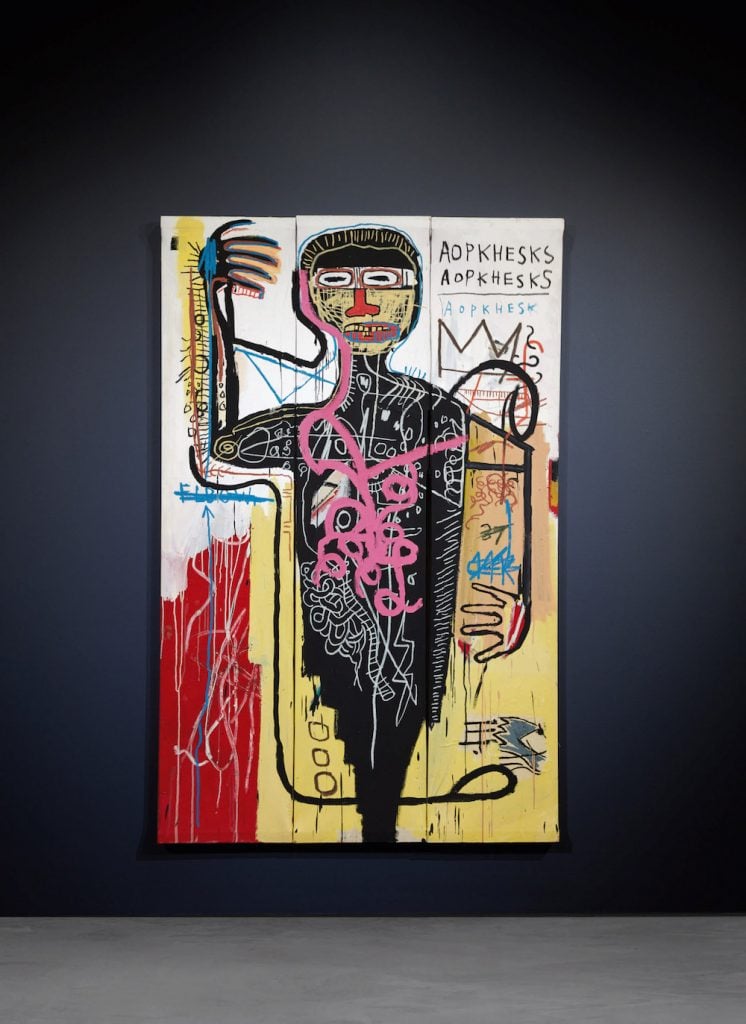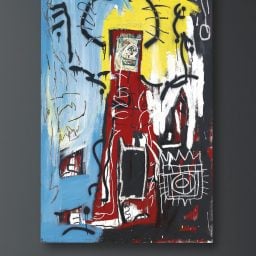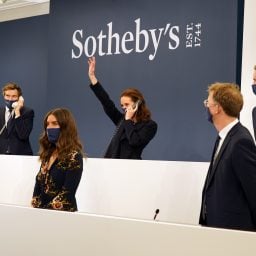Sotheby’s marathon series of auctions on Wednesday evening felt like something of a return to normalcy, if only because, for the first time in more than a year, there were actually a few dozen collectors present in the New York salesroom.
In keeping with our new reality, the sale was also very much a hybrid affair: auctioneer Oliver Barker beamed in from London and specialists manned phone banks in Hong Kong and London as well as New York.
The auction house packed three separate sales—an estate offering, a postwar and contemporary art sale, and an Impressionist and Modern coda—into a nearly five-hour marathon. In all, the evening generated $597 million—a more than 60 percent increase on its equivalent megasale mid-lockdown last June. (Read our report on the Imp-Mod segment of the sale here.)
First came works from the late Texas rancher Anne Marion, whose entire estate is expected to fetch $150 million over the course of several months. (Marion was married to a former Sotheby’s chairman, but the house still had to compete to win the consignment.) The 18 works on offer Wednesday evening achieved $157.2 million, within the $132 million-to-$190.2 million presale estimate.
The second segment, Sotheby’s main contemporary art offering, was even stronger, realizing $218.3 million—well over the original presale high estimate of $209.3 million, despite the last-minute withdrawal of two pricey works.
The evening was led by the week’s second major Basquiat, Versus Medici (1982), which sold for $50.8 million, just above its high estimate of $50 million. (Unless otherwise stated, final prices include auction-house fees; presale estimates do not.)
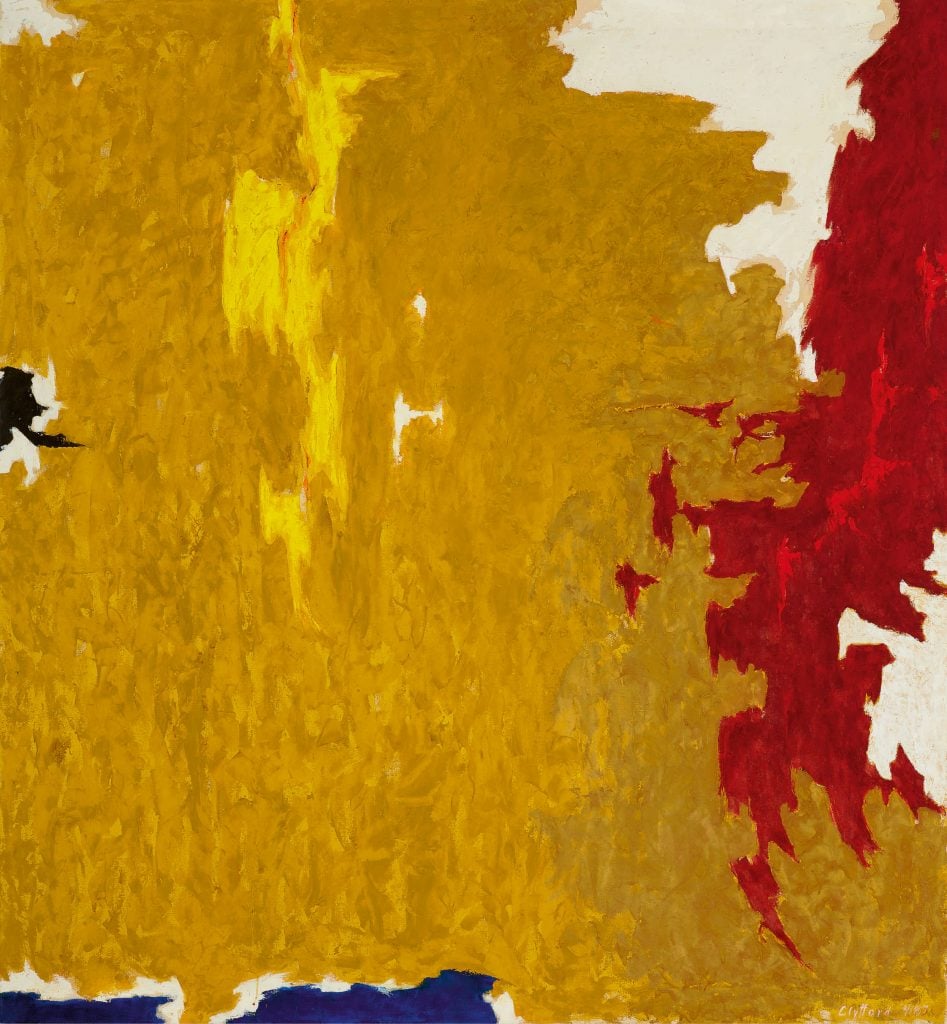
Clyfford Still, PH-125 (1948-No. 1) (1948). Courtesy of Sotheby’s.
Bidding was particularly intense for lower-priced works, and notably thinner on the higher end. New records were set for artists including Richard Diebenkorn, Kenneth Noland, Elizabeth Peyton, Raymond Pettibon, Salman Toor, Robert Colescott, and for a painting by Jeff Koons. Barker kept the proceedings moving at a brisk pace and made more than one joke about it being evening, morning, and afternoon for the various participants around the world.
The setup is “a combination of a TV studio and a cocktail lounge… a good vibe,” said art law specialist and attorney Thomas Danziger, who represents some of the evening’s consignors and had a bird’s eye view from a Sotheby’s skybox. “Canapés and drinks were flowing.”
The first segment of the evening, “American Visionary: The Collection of Mrs. John L. Marion,” was strong out of the gate with intense bidding on Noland’s Rocker (1958), which set the tone with a record price of $4.2 million.
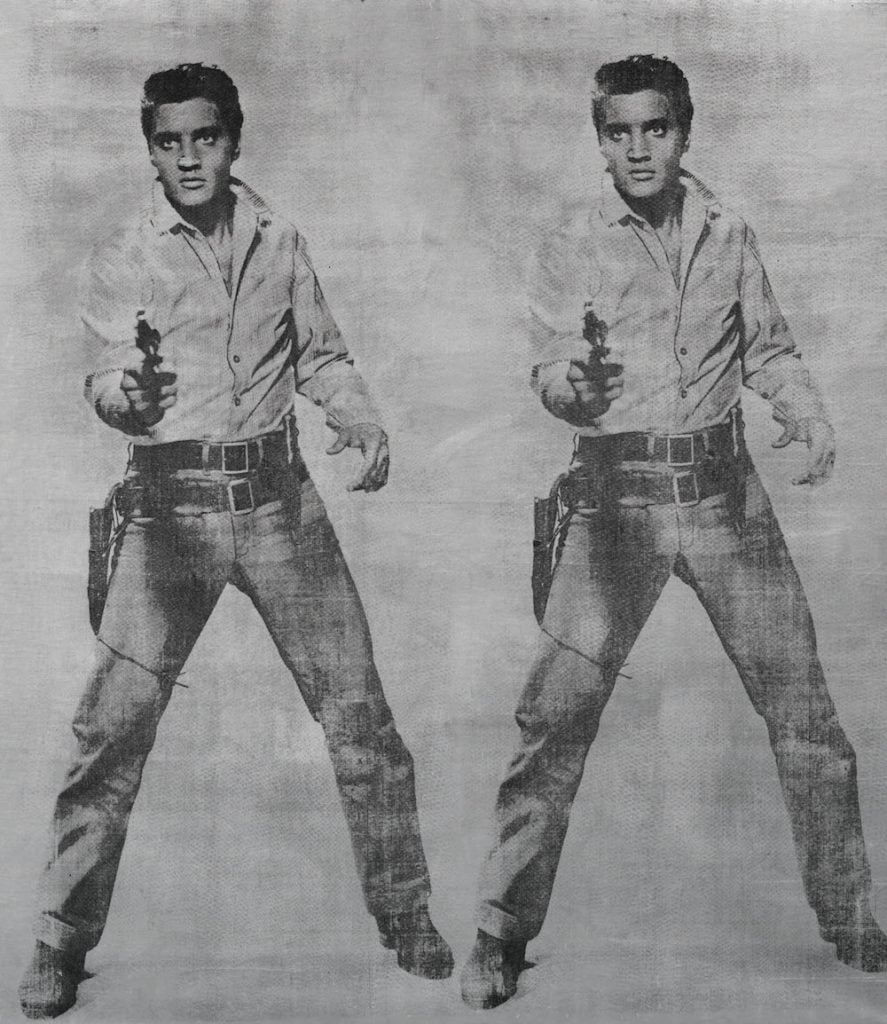
Andy Warhol, Elvis 2 Tiimes (1963). Image courtesy Sotheby’s
As expected, the top lot of the Marion segment was Andy Warhol’s Elvis 2 Times (1963), estimated at $20 million to $30 million. It sold for $37 million to a client on the phone with recently promoted Sotheby’s senior vice president Grégoire Billault.
Another big price, $30.7 million, was achieved for Clyfford Still’s PH-125 (1948-No. 1) (1948), which carried an estimate of $25 million to $30 million. It hammered at $26.5 million to Lisa Dennison, Sotheby’s chairman of Americas (fees pushed the final price up to $30.7 million).

Richard Diebenkorn, Ocean Park No. 40, (1971). Courtesy of Sotheby’s.
Four of the lots in the Marion segment, including a Marino Marini bronze and paintings by Sam Francis and Hans Hofmann, went unsold.
Following the Marion sale, Sotheby’s found plenty of fireworks in its contemporary offering, particularly for rising stars like Salman Toor. The Pakistani-American artist’s 2019 painting of one man greeting another at the door, which was on view in his buzzed-about solo show at the Whitney Museum earlier this year, fetched $867,000. That was more than ten times its $80,000 high estimate.
Of the 32 lots on offer in this segment, nine were certain to sell thanks to financial guarantees. Sotheby’s farmed out some of its risk in the days leading up to the sale, when the number of third-party bids rose to seven from three.
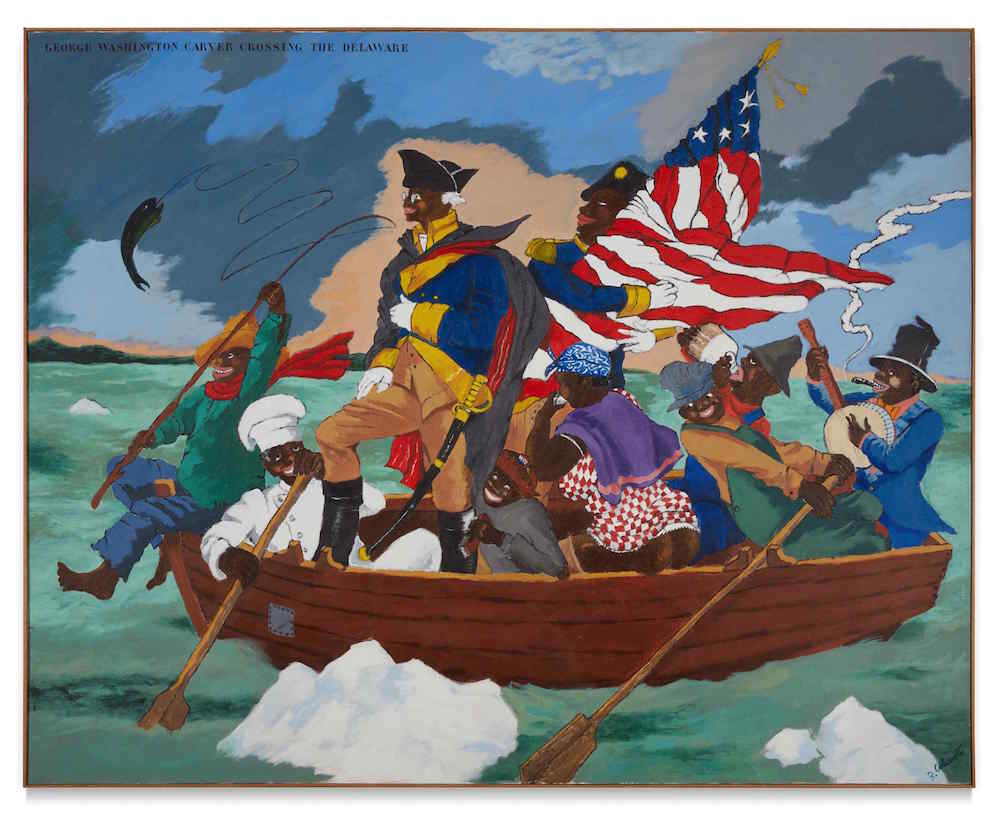
Robert Colescott, George Washington Carver Crossing the Delaware: Page from an American History Textbook (1975). Image courtesy Sotheby’s
Sotheby’s claimed the contemporary offering was a white-glove sale, but two major lots—a David Hockney self-portrait and a major Morris Louis painting—were withdrawn just before it began. As a result, the overall number of lots on offer was 32 instead of 34 and the revised presale estimate was $140 million to $194 million. (It had previously been listed at $150.1 million to $209.3 million; the withdrawals clearly made a substantial difference.)
Some of the most electric bidding was for Robert Colescott’s caustic take on Washington Crossing the Delaware, which fetched $15.3 million after a seven-minute battle. (Its presale high estimate was $12 million; Colescott’s previous auction record was $912,000.) Minutes after the hammer came down, the Lucas Museum of Narrative Art in Los Angeles confirmed it had bought the work, which is considered one of Colescott’s most important.
“Colescott’s direct reference to Emanuel Leutze’s iconic 1851 Washington Crossing the Delaware presents a radical and important alternative telling of the patriotic visual narrative and mythology that has for so long grounded our national identity,” museum CEO Sandra Jackson-Dumont said in an email to Artnet News.
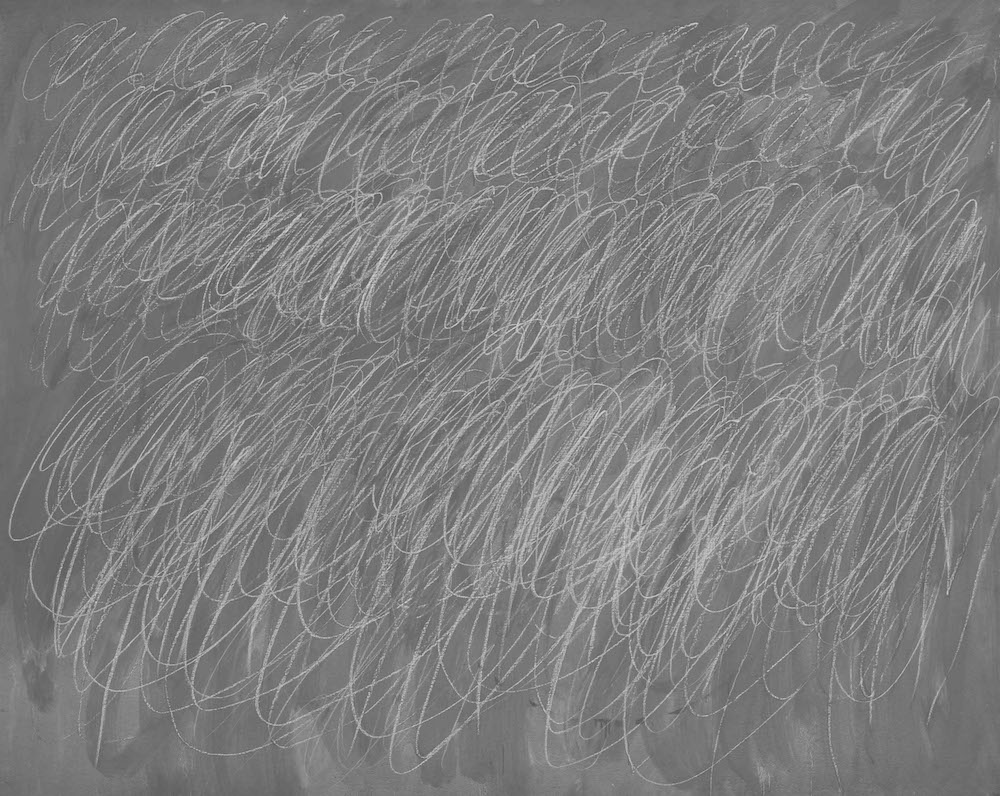
Cy Twombly Rome (1972). Image courtesy Sotheby’s.
The top lot of the night was Basquiat’s Versus Medici, which the artist painted soon after a formative trip to Italy in 1981. Pursued by three Sotheby’s specialists, it hammered to a client of chairman of the Americas Lisa Dennison for $44 million. The picture failed to beat out Christie’s more iconic skull painting, which sold for $91.3 million the night before.
Bidding was even thinner for Cy Twombly’s classic blackboard painting Rome (estimate: $35 million to $45 million), which sold on a single bid to the guarantor for $36 million.
Another focal point of the evening was Banksy’s Love Is In The Air (2005). The work carried an estimate of $3 million to $5 million and was notable in that Sotheby’s had said it would accept cryptocurrency payment for it, through a partnership with Coinbase Commerce. (It marks the first time the house has agreed to accept crypto for a physical object, and may be a sign of bigger changes to come.)
The work sold to a client in Asia for a premium-inclusive price of $12.9 million, far exceeding expectations. A Sotheby’s representative said it was too soon to tell whether the buyer would pay in cryptocurrency.
